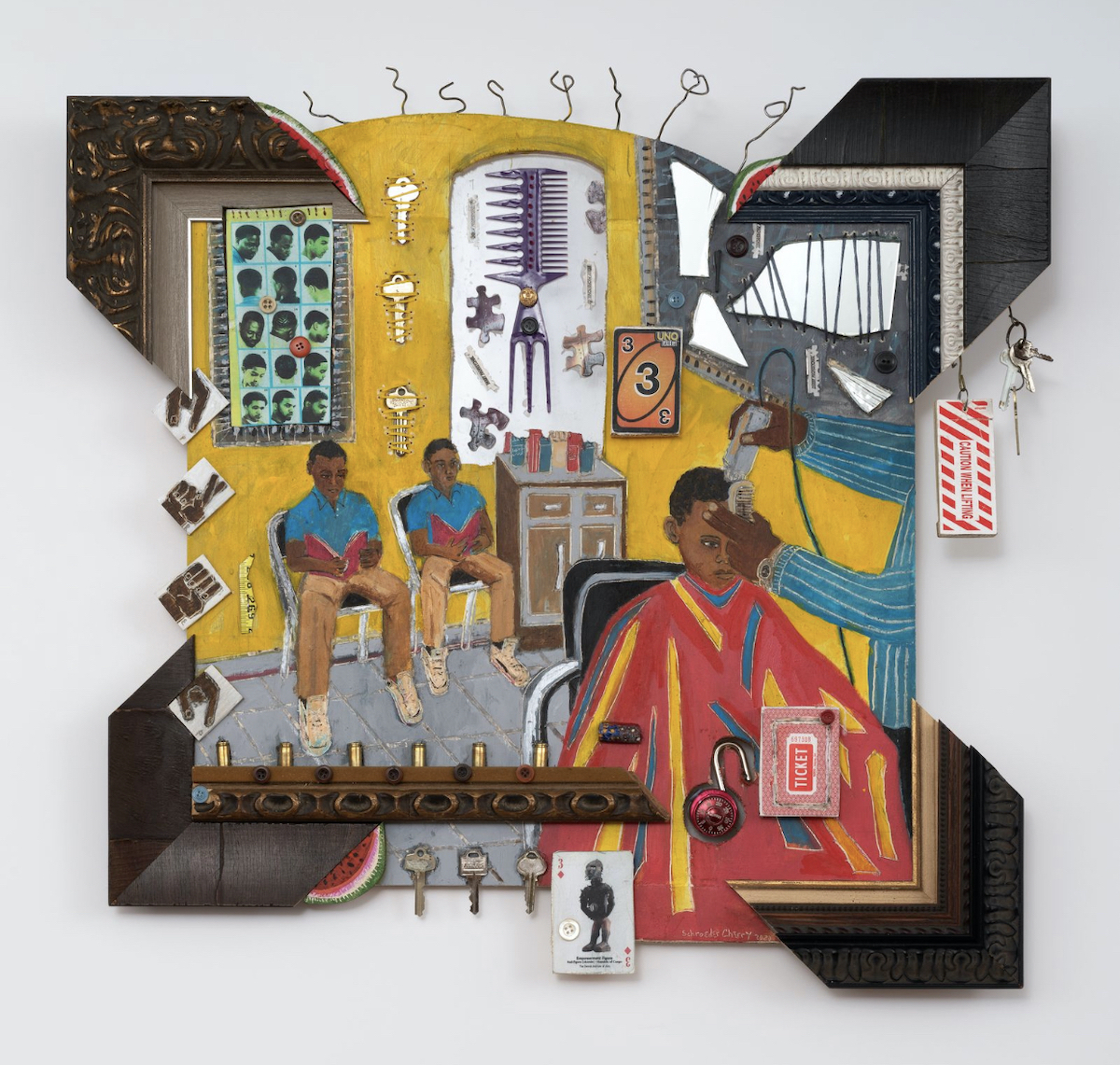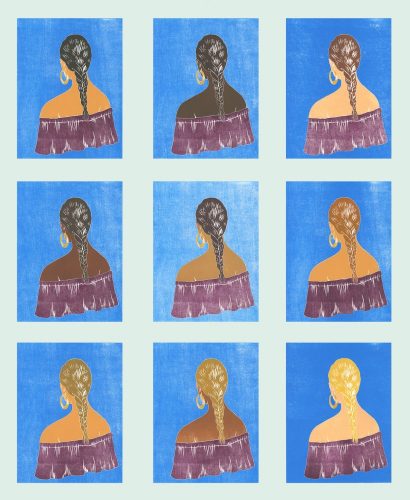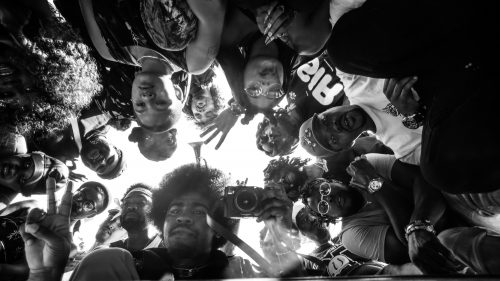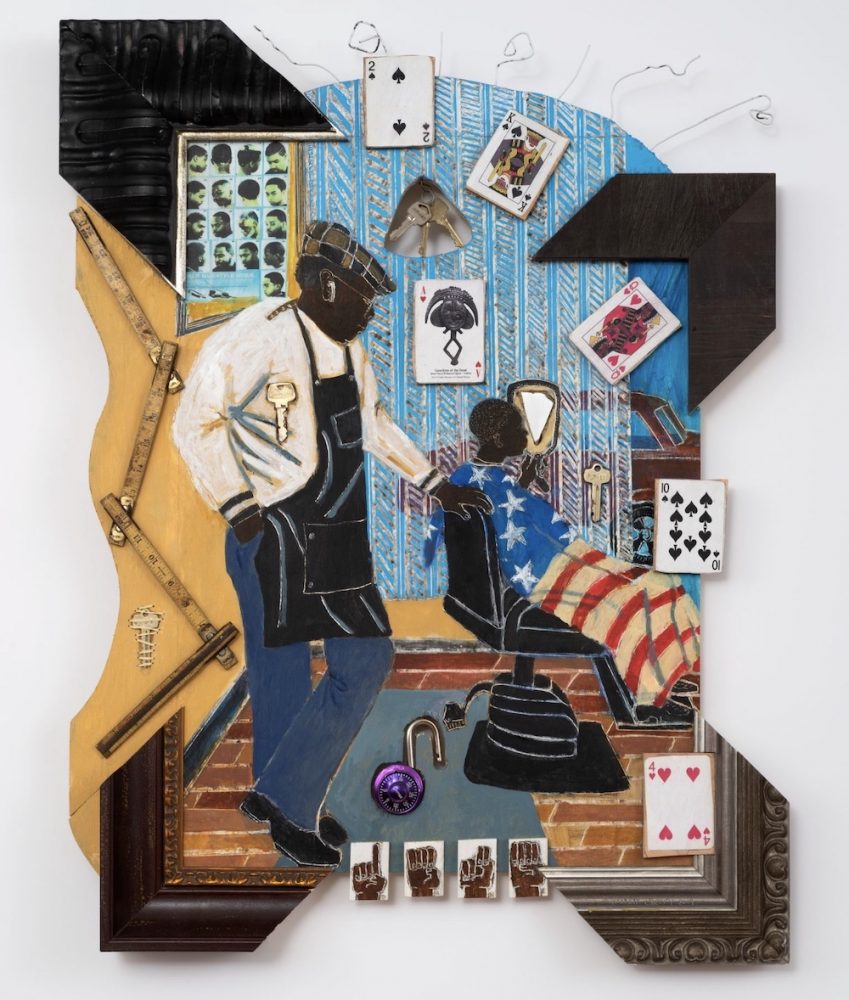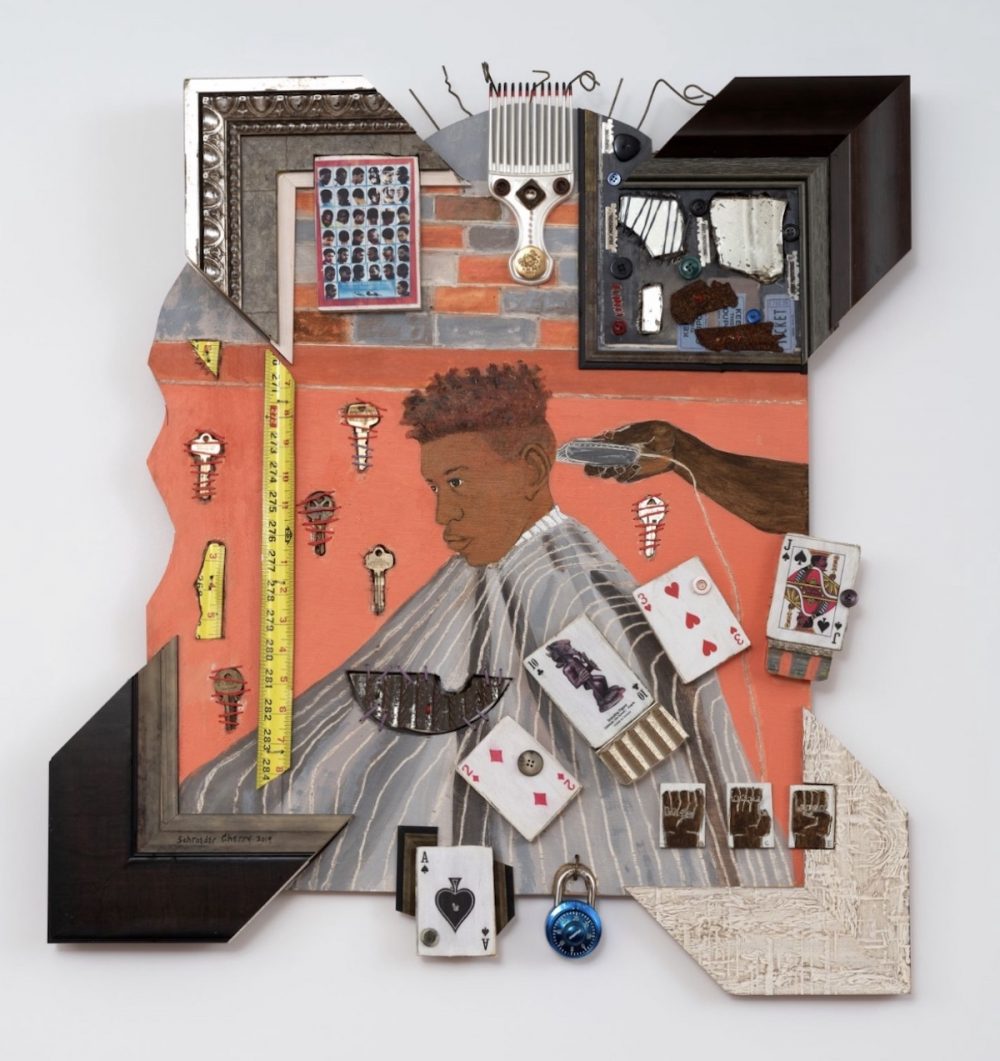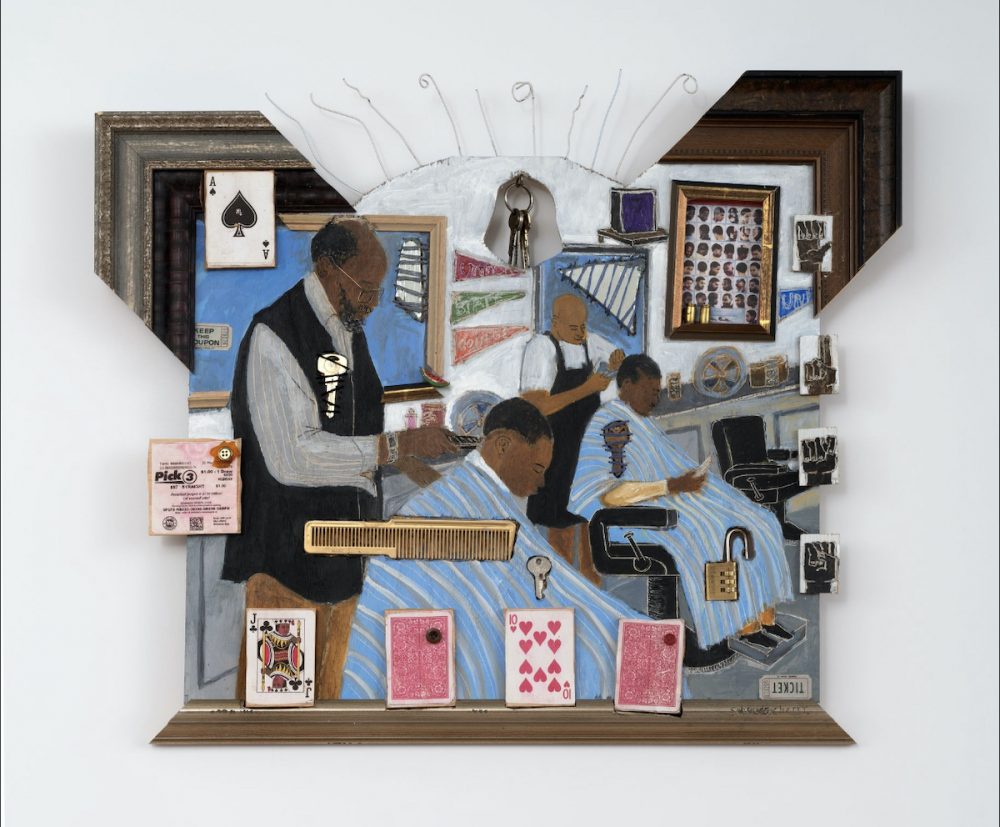For artist Schroeder Cherry, message is synonymous with materials. On display in February at the Gallery at Baltimore City Hall, Cherry’s assemblage paintings combine wooden bits and painted portraits with common everyday household items like keys, playing cards, dice, and combination locks. His solo exhibition, Barbers and Porters: Pillars of the Community, drew parallels between these two unique Black American occupations, where hospitality, attention to detail, and a devotion to one’s craft has manifested in stability and strength within the Black community, both historically and in the present. On opening night, Cherry’s show broke all sales records for exhibitions at City Hall, the red dots proliferating across the walls a testament to a long and well-respected career in the arts.
He wasn’t always known primarily as an artist, though. Cherry’s background as an art educator, administrator, and museum professional is multifaceted and expansive. He studied painting and puppetry at the University of Michigan, earning a BA, and then completed a master’s degree in museum education from George Washington University, and a doctorate in museum education from Columbia. Cherry spent the next thirty years building a successful career as a museum educator and curator at various institutions including the Smithsonian’s Anacostia Community Museum, the Studio Museum in Harlem, the J. Paul Getty Museum, and the Baltimore Museum of Art. Cherry became Deputy Director for Museums and, later, Counselor to the Director, at The Institute of Museum and Library Services in Washington, DC, an organization designed to evaluate and support museums and libraries through grantmaking, research, and policy development. Throughout all of his various roles as a museum professional, Cherry’s inner artist motivated him to combine institutional goals with his own gifts as a puppeteer, historian, and storyteller.
Except for teaching a museum studies class at Morgan State University, Cherry is now a full-time artist whose practice reflects the strength of his training as a painter but also his decades working in museums. His creative practice still includes making and animating puppets, but has evolved into visionary assemblages, which carry the lineage of storytelling portraiture by artists like Jacob Lawrence, Kerry James Marshall, and Faith Ringgold, earning him an exhibit at the Walters Art Museum as a Sondheim finalist in 2019.
As a series, Barbers and Porters explores the folklore around these two historic professions which led to the rise of a Black middle class. Cherry depicts the Pullman train porters who worked on luxury railroad sleeping cars in the late 1880s-1920s, whose travel experiences influenced the Great Migration and whose wages and tips sent their families to college, creating a new educated class of Black men and women. Cherry’s barbers appear more contemporary but no less influential, emphasizing the way Black barbershops continue to function as safe havens for community and incubators for political organizing and cultural production.
Through evocative, material-laden storytelling, Cherry challenges conceptions of American history, as well as traditional divisions between art and craft, where functional materials like wood, fiber, repurposed hardware, and household objects are combined into dimensional paintings, scenes that feel purposefully decorative but also mysterious in the way that they ask questions of the viewer. Each of Cherry’s assemblage portraits creates a sense of familiarity, especially through the everyday objects and materials he repeatedly incorporates as symbols for larger questions and preconceived notions of American history and culture.
